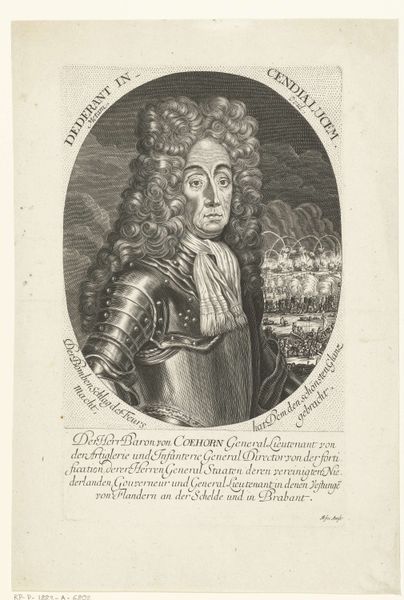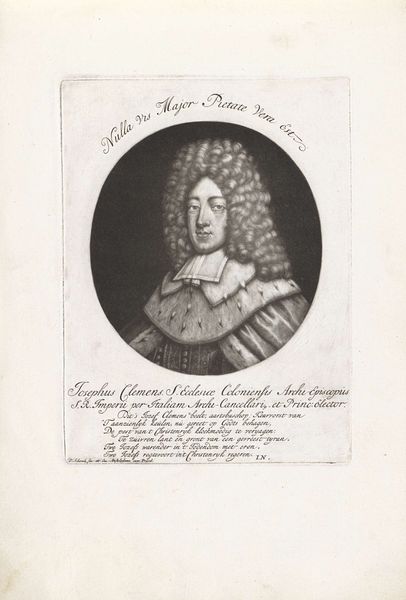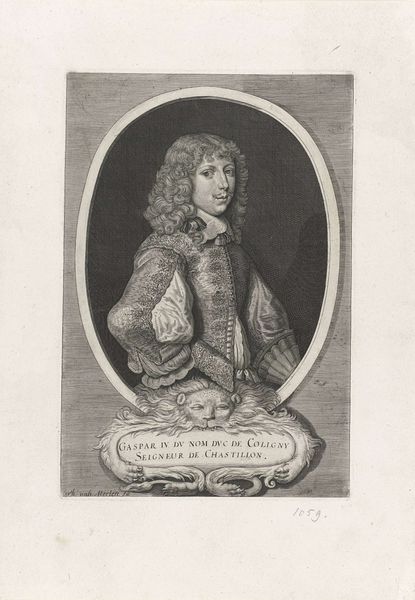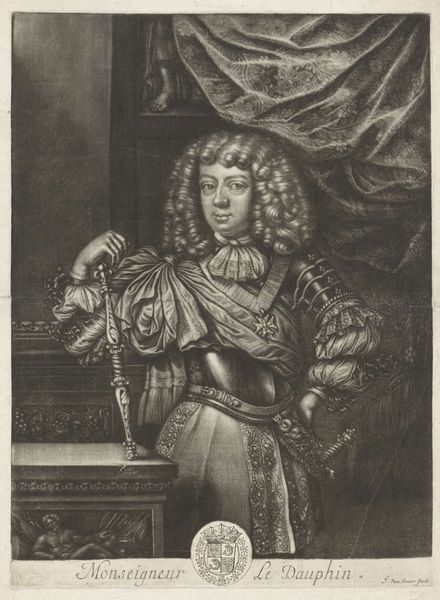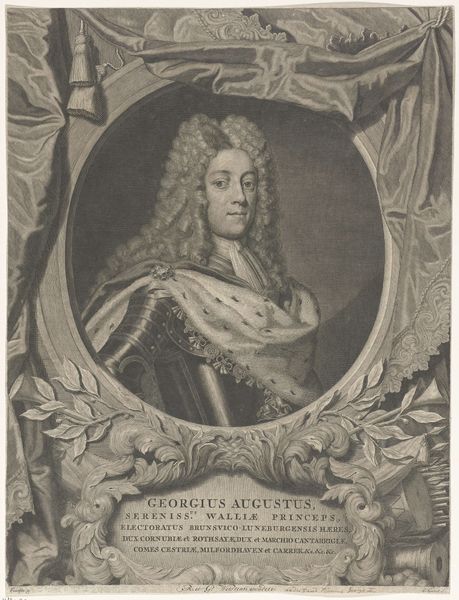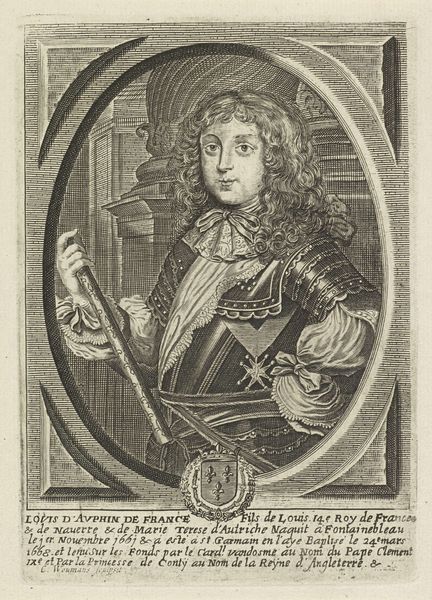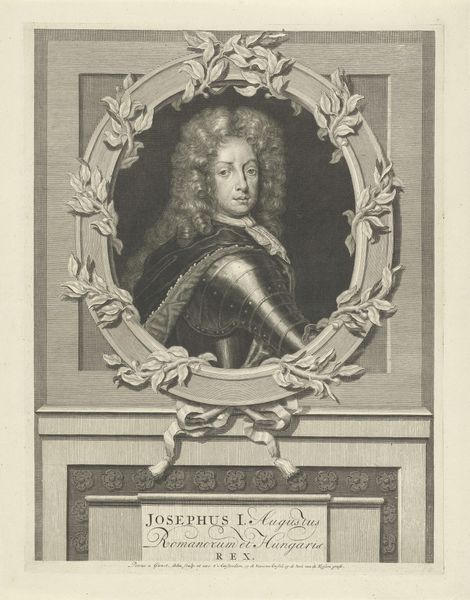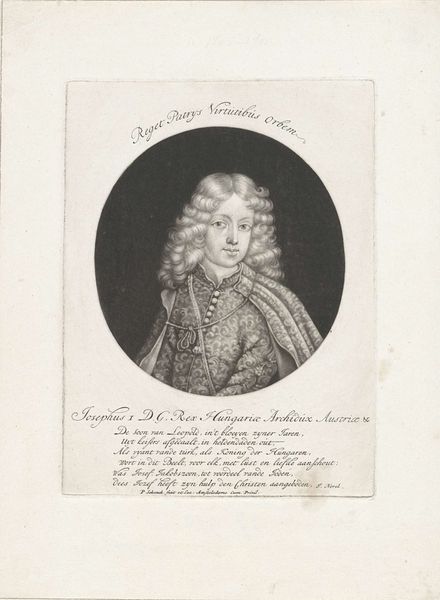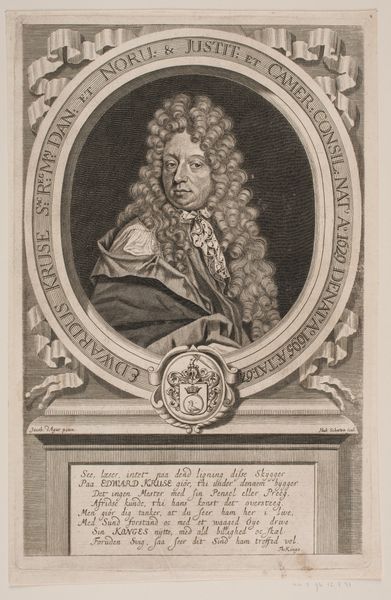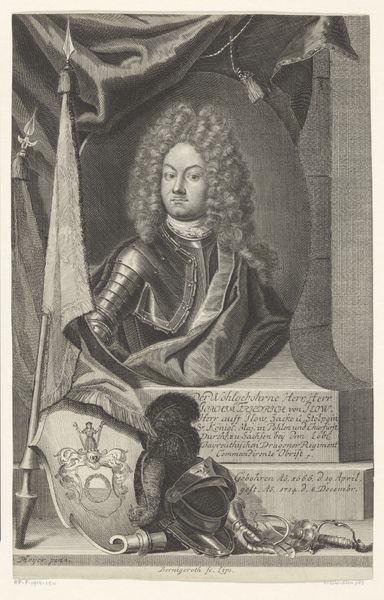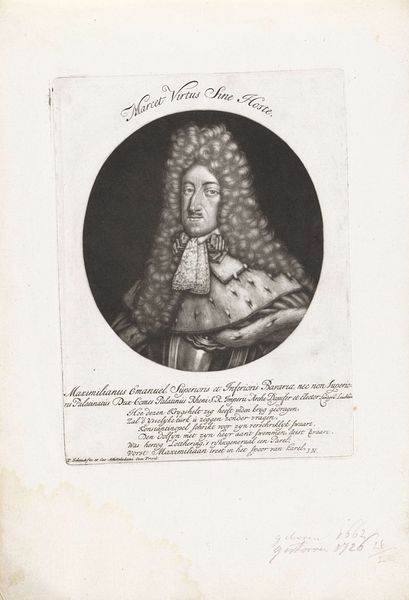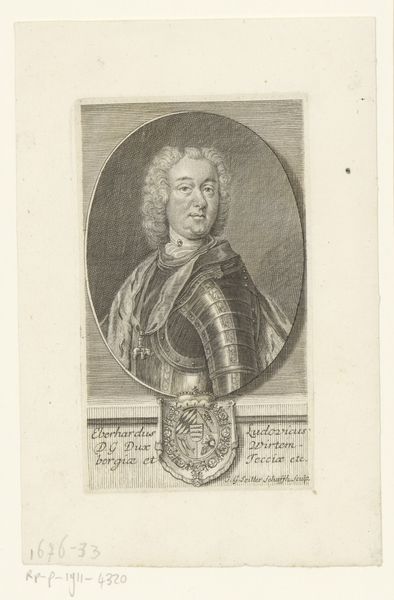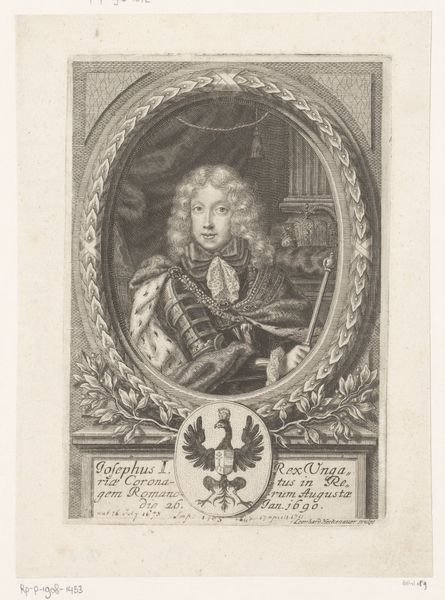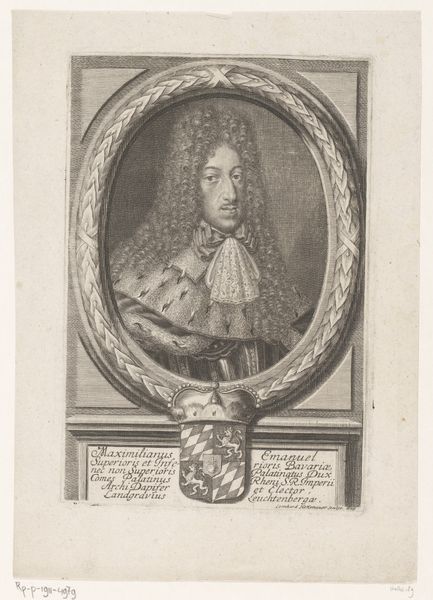
print, engraving
#
portrait
#
baroque
# print
#
old engraving style
#
geometric
#
history-painting
#
engraving
Dimensions: height 185 mm, width 139 mm
Copyright: Rijks Museum: Open Domain
Curator: Pieter Schenk’s "Portret van keizer Jozef I," made sometime between 1690 and 1713, is a baroque engraving currently held in the Rijksmuseum. My initial impression is one of intense formality, bordering on the theatrical, wouldn't you say? The subject seems almost overburdened by the weight of symbols. Editor: Indeed. There's an almost suffocating feeling to it, perhaps reflecting the rigid power structures of the era. Think about what it meant to be portrayed and viewed through such carefully manufactured iconography. The tools to print such artwork in this era made propaganda very practical, making the ruling body an even more powerful position of societal leverage. Curator: Let's delve into the materials. Schenk was a master of engraving, and the process involved meticulous labor. Each line was carefully etched onto the plate, demanding precision and immense patience. It is a reproduction, therefore, it can be mass-produced; its materiality extends to its function as readily available propaganda to cement imperial power. Editor: Precisely! And consider how prints functioned within society at that time. They weren’t just aesthetic objects. The circulation of such a portrait was inherently political, bolstering Joseph I's image and reinforcing his authority and social position across Europe. What does it tell us about this subject specifically, too? Joseph had to live up to such intense, one-dimensional values presented in his portrait. The labour that Schenk dedicated to Joseph highlights that social leverage mentioned earlier, too. Curator: The crown and scepter are obvious symbols of power, almost cliche, but executed here with impressive detail. Look closely at the ermine trim of his robes; it’s meticulously rendered, emphasizing wealth and status. Also the Latin quote at the top "Vnus Dominabitur Orbi," implying global domination. Editor: Right, the composition reinforces this air of dynastic inevitability and pre-destined greatness. But what stories are deliberately excluded from the image? It is always vital to investigate how those stories intersect. The work conditions required, the raw resources involved and other such material requirements do, arguably, provide deeper value when assessing what we know and interpret the social meaning in the world and in this instance, about power in this imperial family. Curator: A potent consideration. Examining art from this perspective makes you think of it as a manufactured construct. I’ll see this a little differently going forward. Editor: Absolutely. These glimpses behind the scenes expand and add value to historical moments in this way. It allows us to look at and analyse artwork from an informed perspective with all factors of play and in conjunction.
Comments
No comments
Be the first to comment and join the conversation on the ultimate creative platform.
